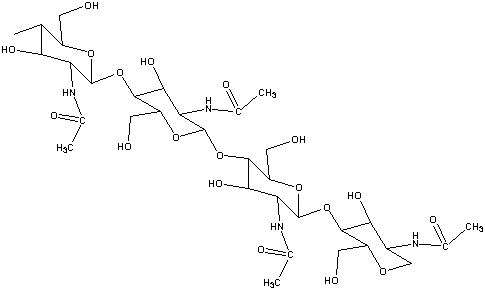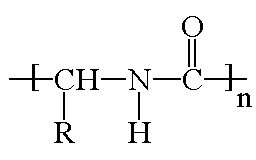Polymers from shelled creatures

Most of the creatures that have a shell of some
sort are usually found in or near a body of water. This includes clams,
oysters, crabs, and lobsters, and shrimp just to name a few of the main
players. There are many others, such as squids,
which aren't as well known for their shells, and
insects, most of which are not found in the sea. So we will stick with
the ones we know the most about and come from the ocean.
An abundance of natural polymers
are found in  these creatures that wear shells. Oddly enough it is
these shells which contain the most used polymers. Chitin is a polysaccharide that is found in a
variety of creatures, from insects to fungus, but most abundantly in the
shells of crustaceans such as crabs, lobsters, and shrimp.
these creatures that wear shells. Oddly enough it is
these shells which contain the most used polymers. Chitin is a polysaccharide that is found in a
variety of creatures, from insects to fungus, but most abundantly in the
shells of crustaceans such as crabs, lobsters, and shrimp.
Chitin looks like this:

Just so you know, chitin is not the only substance found in these
shells, but like I
said it is the most used, as well as the most abundant. Protein is probably the second most used natural
polymer that is found in shells and the creatures themselves, not to
mention your own bones and hair. Chitosan is a polymer derived from
chitin and is used in applications from health care to agriculture to dyes
for fabrics.
Slow shelled creatures

Clams, oysters and mussels make up another portion of the shelled creatures. See the pretty shells. These organisms which feed on plankton, and in turn feed larger creatures such as turtles, starfish, squid, and sharks.
Some have only one shell while others have two shells that are hinged together. All of these shells contain chitin, but the outer most layer of the shell is a tanned protein.
